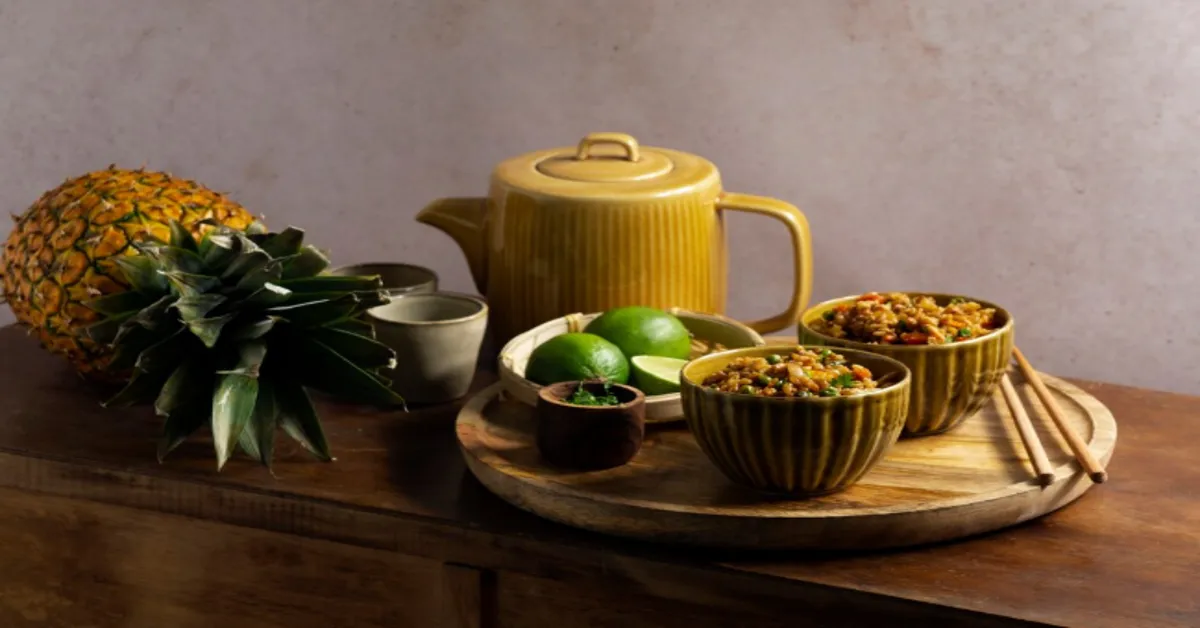In Southeast Asian communities, particularly within Malaysia, Indonesia, and Singapore, the term “te tebal” refers to a strong, thick, and often sweet tea that is as much a part of the cultural fabric as it is a daily ritual. Within the first few sips, one can taste the layered richness—its robust brew, intense flavor, and the unmistakable hand of tradition. For anyone wondering what “te tebal” truly means, it is not just a beverage. It is a statement of taste, a method of preparation, and a cultural signifier with evolving interpretations across regions and generations.
Whether you’re new to the concept or looking to understand its broader implications, this article delves into every angle of te te-bal: its linguistic roots, traditional practices, nutritional value, cultural symbolism, and modern-day reinventions. This guide will also examine how “te tebal” is distinct from other tea variants, its preparation techniques, and how the term has come to encompass more than just a literal thick tea—sometimes symbolizing wealth, comfort, or even excess in local narratives.
Understanding the Term “Te Tebal”
The phrase “te te-bal” directly translates from Malay or Indonesian as “thick tea.” But unlike many literal translations, this phrase encompasses much more than just the density of the beverage. It speaks to strength—of taste, concentration, sweetness, and presence.
Linguistically, “te” is a regional pronunciation for “tea,” while “tebal” means “thick” or “dense.” When used colloquially, it often signifies a tea that is rich, full-bodied, and typically served with condensed milk or copious amounts of sugar.
But there’s an important nuance: te te-bal is not always about viscosity. Sometimes, it’s about boldness—an unapologetically strong brew that leaves a lasting impression on the palate. In this way, the term has also become symbolic, often used metaphorically in popular culture to describe anything intense or over-the-top.
Traditional Preparation: The Art of Making “Te Tebal”
In street-side warungs (food stalls) and urban cafes, the making of te te-bal is a display of precision and flair. Unlike a casual tea bag dipped in hot water, this drink demands time, attention, and usually, a dramatic pour.
Common Preparation Method:
- Tea Base: Loose black tea leaves (commonly Ceylon or Assam varieties) are boiled for an extended period to extract maximum flavor.
- Concentration: Water is reduced during boiling, intensifying the brew.
- Sweetening: Generous dollops of condensed milk or sugar are added to balance the bitterness.
- Cooling and Aeration: A signature technique involves pouring the tea between two containers at a distance to cool it and introduce air bubbles—resulting in a frothy top.
- Serving: Traditionally served hot, but iced versions are also popular in modern contexts.
This method doesn’t just create a drink—it builds expectation. The pouring process itself is theatrical and often done in front of customers, particularly in night markets and food courts.
Te Tebal vs. Other Regional Teas
To appreciate te te-bal, one must compare it to its regional relatives. Below is a comparison of te tebal and other Southeast Asian tea styles:
| Tea Type | Origin | Key Characteristics | Milk Used | Sweetness Level | Preparation Style |
|---|---|---|---|---|---|
| Te Tebal | Malaysia/Indonesia | Strong, thick, very sweet, frothy | Condensed Milk | High | Boiled, hand-poured |
| Teh Tarik | Malaysia | Pulled tea, lighter than te tebal | Condensed Milk | Medium-High | Pulled aeration technique |
| Thai Iced Tea | Thailand | Spiced, orange-colored, very sweet | Evaporated/Condensed Milk | Very High | Tea mix with food coloring |
| Chai | India | Spiced, simmered with milk and sugar | Whole Milk | Medium | Slow-boiled with spices |
| Ceylon Tea | Sri Lanka | Strong, plain or with milk | Optional | Low-Medium | Steeped, not boiled |
As the table illustrates, te te-bal holds a unique space—it is intentionally intense, both in flavor and in texture.
Cultural Significance: More Than Just a Drink
In local households and public spaces, te te-bal signifies more than refreshment—it represents hospitality, warmth, and social connection. Offering te te-bal to guests is a common gesture of respect. In some communities, a good cup of tea is judged by its strength—too watery and it’s a mark of insincerity.
Social Symbolism:
- Hospitality: Strong tea shows effort, signaling that the host values the guest.
- Generosity: The richness implies abundance; it’s a drink that costs more to make.
- Tradition: Passed down recipes and techniques connect generations through flavor.
Additionally, in local music, literature, and cinema, te te-bal has become a metaphor. It might be used to describe someone’s personality—“thick” with emotion, substance, or even pretension.
Nutritional Content and Health Perspectives
While te tebal is beloved for its taste, health-conscious consumers may have concerns about its sugar and calorie content. Let’s break down the typical nutritional profile for a single cup (about 250 ml) of traditional te tebal:
| Nutritional Component | Estimated Amount per Cup |
|---|---|
| Calories | 180–220 kcal |
| Sugars | 20–30 g |
| Caffeine | 40–60 mg |
| Fat | 4–6 g |
| Protein | 3–5 g |
This profile changes drastically depending on preparation methods. Versions made with less sugar or skimmed milk may be significantly lighter. However, te te-bal is rarely associated with dietary restraint; it is a drink of indulgence and satisfaction.
Health Considerations:
- Pros:
- Contains antioxidants from black tea
- Can offer short-term energy boost
- Cons:
- High sugar content may contribute to metabolic risks
- Calorically dense, especially for daily consumption
Today, more vendors are offering sugar-free or plant-based milk options, signaling a shift toward a more health-conscious consumer base.
Regional Variants and Naming Conventions
While te te-bal is rooted in a specific term, its application differs across regions:
- Indonesia: Often found in Java and Sumatra, where the tea is intensely boiled and served in glass mugs.
- Malaysia: Known both in rural kopitiams and modern cafes, occasionally referred to as te pekat (another term for strong tea).
- Singapore: Sometimes offered in Indian-Muslim eateries, though more commonly overshadowed by teh tarik.
Interestingly, in Brunei, you may find a version called te c thick, blending English and Malay to refer to a similarly strong tea.
Modern Adaptations: Cafés, Bottled Teas, and Beyond
The revival of traditional drinks among Gen Z and Millennials has led to a new wave of innovation. Te te-bal is no longer confined to roadside stalls. It is being bottled, rebranded, and offered as a luxury drink in cafes.
Emerging Trends:
- Bottled “Te Tebal”: Available in supermarkets and vending machines, these ready-to-drink versions cater to convenience while preserving richness.
- Café Culture: Upscale teahouses are now offering “artisan te te-bal” with fusion ingredients—lavender syrup, oat milk, and even cold brew variations.
- Social Media Influence: TikTok and Instagram have made aesthetic versions of the drink go viral, with frothy tops and colorful layers.
This shift reveals an essential truth: cultural beverages can evolve without losing their soul. While the ingredients may change, the emotional connection remains.
Economic and Commercial Impact
In Southeast Asia, the tea industry contributes significantly to small and medium enterprises. Te te-bal, in particular, has created commercial opportunities:
- Local Entrepreneurship: Thousands of street vendors base their businesses around variations of te te-bal.
- Franchise Models: Chains like Tealive or Chatime now offer versions with customization—sugar levels, toppings, etc.
- Export Potential: With the global love for Asian drinks, te tebal has export potential, especially in niche international markets.
Yet, the increasing commercialization raises important questions about authenticity and appropriation. When large corporations market traditional drinks, are they preserving or diluting cultural value?
Te Tebal in Daily Life
Ask a local about te tebal, and they’ll likely associate it with a specific moment—early morning routines, late-night chats, or Ramadan fasting breaks. The drink punctuates daily life with both comfort and routine.
It’s common to hear expressions like:
- “Tak lengkap kalau tak ada te tebal pagi ni.” (It’s not complete without te tebal this morning.)
- “Buat te tebal dulu, baru sembang panjang.” (Make some te tebal first, then we talk long.)
In this way, the beverage is not passive consumption—it is an active part of social and emotional life.
Sustainability and Ethical Considerations
With growing focus on environmental impact, tea farming and packaging come under scrutiny. Te tebal, especially when prepared from loose leaves and served in glass, is generally eco-friendly. However:
- Condensed milk cans and plastic packaging from bottled variants contribute to waste.
- Sourcing ethically grown tea is essential to protect workers and ecosystems.
Consumers are beginning to ask where their tea comes from—not just what it tastes like. This shift could redefine how te tebal is produced in the coming decade.
Conclusion: Why “Te Tebal” Still Matters
Te tebal endures not only because it is delicious, but because it is expressive. It speaks of heritage, personality, warmth, and boldness. It may be just tea, but it is never just a drink. For some, it’s a morning staple. For others, it’s an occasional indulgence. But for all who know it, te tebal holds meaning.
In today’s fast-moving world, where everything is optimized for speed and efficiency, there is something deeply grounding about a beverage that insists on taking time—on being rich, heavy, and thick with flavor and memory. It invites us not just to drink, but to pause, share, and savor.
And that is why te tebal is more than words, more than tea. It is culture in a cup.
FAQs
1. What does “te tebal” mean?
Te tebal is a Malay/Indonesian phrase meaning “thick tea.” It refers to a strong, rich, and often sweet tea made by boiling black tea leaves and mixing them with condensed milk or sugar. The result is a bold, full-bodied drink that’s culturally significant in Southeast Asia.
2. How is te tebal different from teh tarik?
While both drinks use similar ingredients, te tebal is more concentrated and stronger in flavor. Teh tarik is “pulled” to create foam and typically has a lighter taste. Te tebal is boiled longer for intensity and may not always be aerated.
3. Is te tebal healthy to drink every day?
Te tebal is delicious but high in sugar and calories due to condensed milk. While occasional consumption is fine, daily intake may contribute to excess calorie consumption and blood sugar concerns. Healthier versions use less sugar or plant-based milk alternatives.
4. Can I make te tebal at home?
Yes. Boil strong black tea (like Assam or Ceylon), reduce the liquid to concentrate, and mix with condensed milk. To replicate the café-style froth, pour the tea between two cups from a height to aerate.
5. Is te tebal served hot or cold?
Traditionally, te tebal is served hot, but cold or iced versions are increasingly popular, especially in urban cafés. Both variations retain the signature richness, though the hot version is often preferred for its warming and comforting feel.











